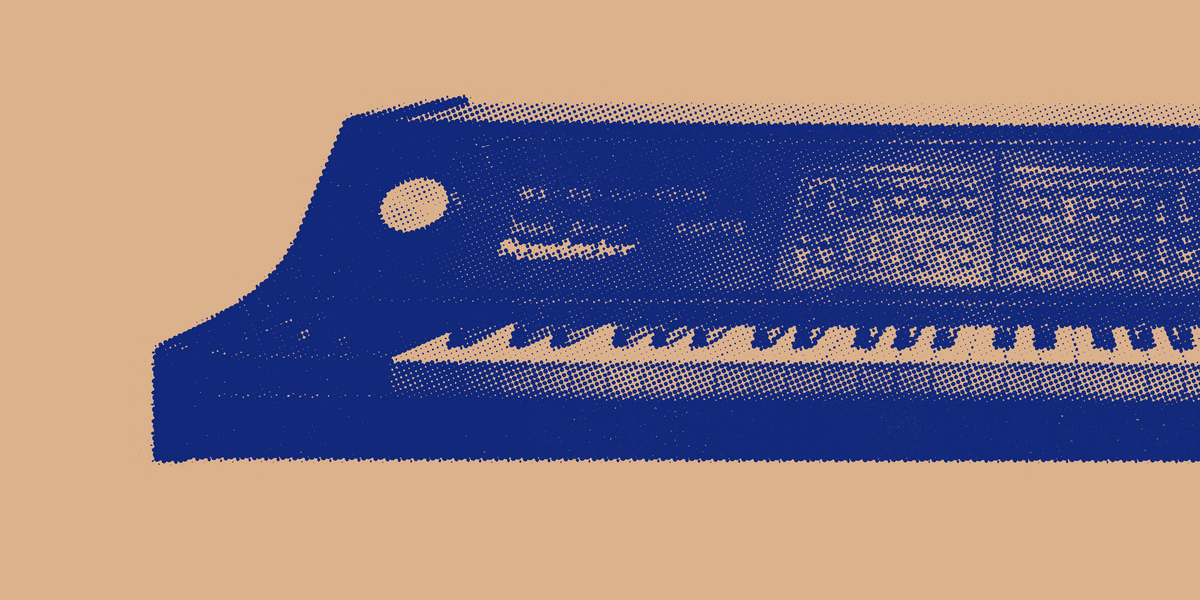The Synclavier that made (and broke) electronic music careers
Complex and expensive and powerful and did we mention expensive? The Synclavier wasn't quite iconic, but holds an important place in music history.

The Synclavier, a revolutionary digital synthesizer, was first introduced to the world in 1977-78. Its unique combination of versatility, cutting-edge technology, and distinctive sounds made it a highly influential instrument among electronic music composers and producers1. This article aims to provide an in-depth exploration of the Synclavier's history, its technical aspects, and its lasting impact on the music industry. We will delve into its origins, its evolution, and how it has shaped the landscape of music production and composition.
Origins and Development
The Synclavier's story begins with the New England Digital Corporation (NED), founded by Sydney Alonso and Cameron Jones. In 1978, NED introduced the Synclavier I, marking the birth of the first commercial digital FM synthesizer and music workstation1. This innovative instrument represented a significant leap forward in the field of music technology.
The origins of the Synclavier began when Cameron Jones and Sydney Alonso started to develop software and hardware for electronic music for John Appleton's electronic music course at Dartmouth. After graduation, Jones and Alonso developed a 16-bit processor card and a new compiler to create their ABLE computer, NED's first product sold to institutions for data collection applications1.
The first musical application developed by NED was the Dartmouth Digital Synthesizer, based around the ABLE microprocessor, which was released as a production model Synclavier I in 1977. The new device was intended as a fully-integrated high-end music production system rather than an instrument and sold for $200,000 to $500,000, way beyond the reach of most musicians and recording studios1.
In 1980, NED launched the Synclavier II, which quickly became a sensation in the professional music scene. The Synclavier II was a FM-additive hybrid synthesizer with a 32-track digital sequencer memory and was the first musical device aimed at creating an integrated tapeless studio. In 1982, a digital 16-bit sample facility was added that allowed the user to not only sample but resynthesize samples using FM, making the Synclavier one of the earliest digital samplers1. In 1984, a direct to disk digital audio recording, sample to 32MB memory, 200 track sequencer, guitar interface, MIDI and SMPTE capability were included, making the Synclavier II an extremely powerful but very expensive integrated audio production tool.
Technical Aspects
The Synclavier was a groundbreaking instrument that combined digital synthesis and music workstation capabilities. The original Synclavier I used FM synthesis, a technology relicensed from Yamaha. It was sold mostly to universities and was known for its computer and synthesis modules.
The Synclavier II, released in 1980, was a significant evolution of the original design. It was the first instrument to allow four simultaneous channels or voices of synthesis to be triggered with one key depression, greatly improving the harmonic series activity of the final synthesized sound. In 1982, 16-bit user sampling, originally in mono only, was added as an option. The Synclavier II was succeeded by the ABLE model C computer-based PSMT in 1984 and then the Mac-based 3200, 6400, and 9600 models, all of which used the VPK keyboard.
Impact and Influence
The Synclavier had a profound impact on the world of music production and composition. Its unique sound and advanced technology made it a popular choice among industry professionals, influencing a generation of electronic music composers and producers1. Many notable musicians and composers adopted the Synclavier, further cementing its influence in the music industry.
The Synclavier was also a pioneer in revolutionizing movie and television sound effects and Foley effects methods of design and production, starting at Glen Glenn Sound. Although its high cost made it inaccessible for most musicians, it found widespread use among producers and professional recording studios, competing at times in this market with high-end production systems such as the Fairlight CMI.
Legacy and Modern Usage
The Synclavier's legacy continues to resonate in the music industry today. Its influence can be seen in the evolution of modern music technology, particularly in the field of digital synthesis. Today, the spirit of the Synclavier lives on in the form of the Synclavier Go! app, a testament to its enduring impact. This app brings the power and unique sound of the Synclavier to a new generation of musicians, demonstrating the lasting influence of this revolutionary instrument.
In 2019, Cameron Jones released an iOS version of the Synclavier, dubbed Synclavier Go!, using much of the original code base. Jones also worked with Arturia to bring the Synclavier V software version of the instrument to their V Collection plugin suite. In 2022, Synclavier Digital released and started production on the Regen, a desktop FM synthesizer.
Conclusion
The Synclavier stands as a testament to the transformative power of technology in the realm of music. Its history is a fascinating journey of innovation and influence, shaping the landscape of music production and composition. The Synclavier's legacy endures, continuing to inspire and influence the music industry to this day.


